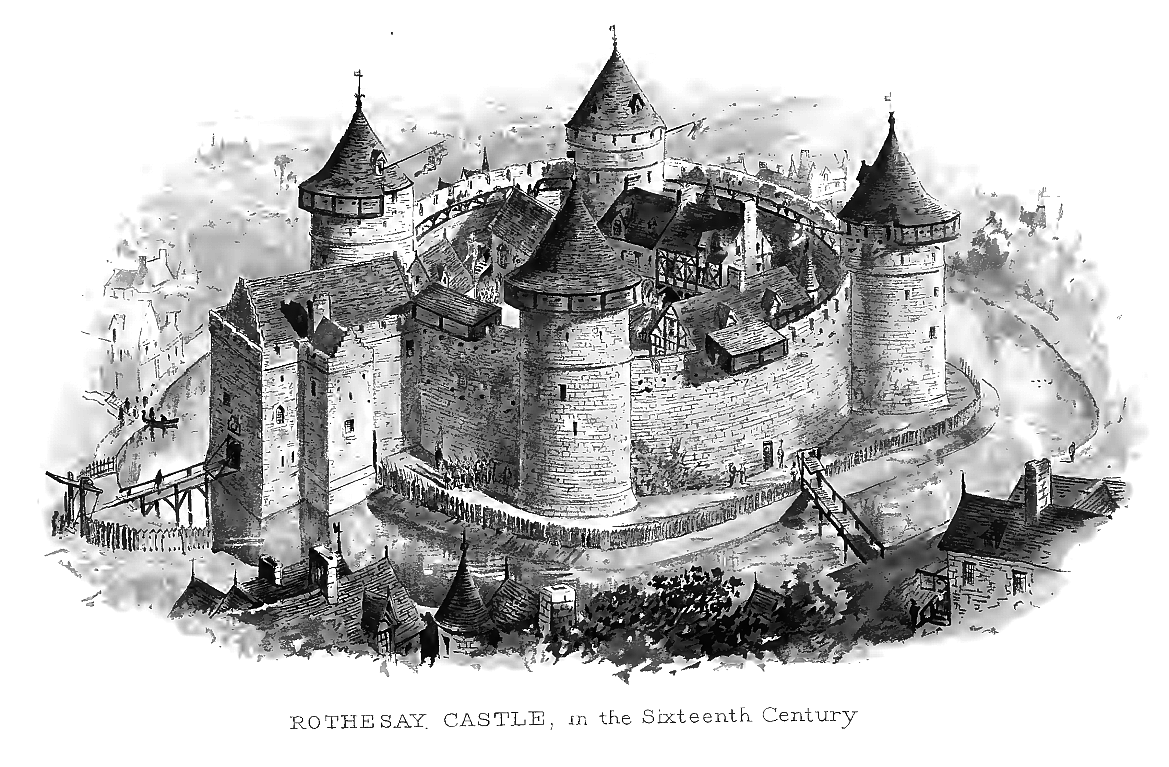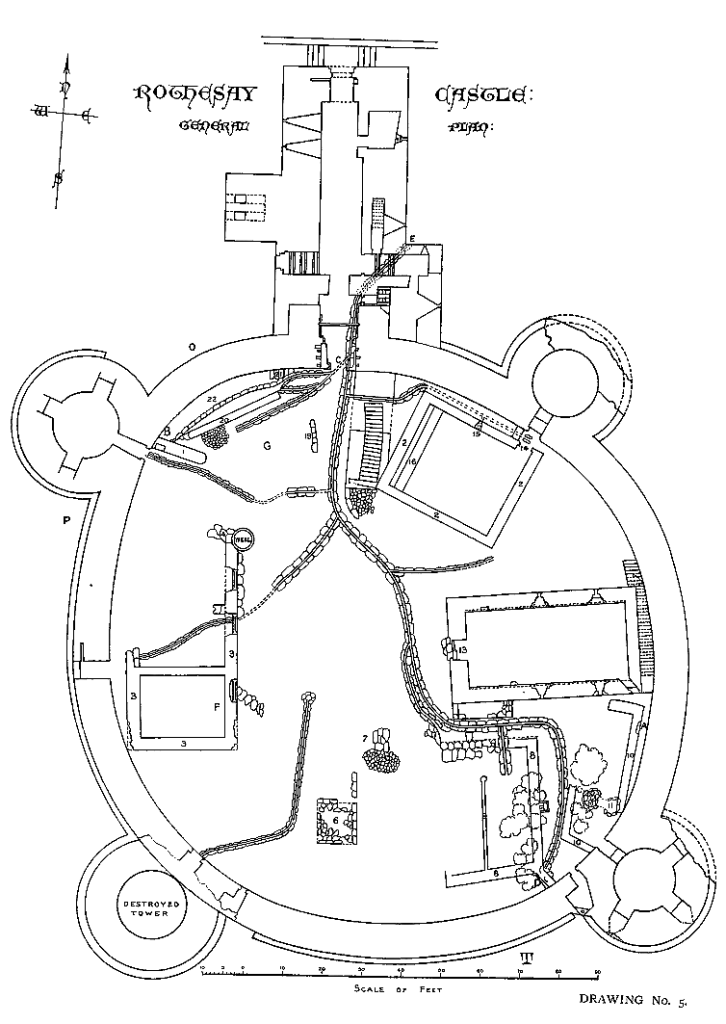Rothesay Castle

Rothesay Castle’s history is notably intertwined with the actions of Alan, the son of Walter, the Steward of Scotland, who is believed to have significantly contributed to its construction and fortification. Likely begun by Alan to secure his possessions, the castle featured a circular wall and four towers, employing masonry similar to that found in St Blaan’s Church, suggesting a unified architectural effort from a single quarry. This construction phase possibly occurred in the early 13th century, aimed at reinforcing the stronghold against external threats. However, during a siege in 1230 by Uspak, parts of the castle were damaged, indicating that the construction was relatively recent since the mortar had not fully set, making the stones easier to dislodge. The account of this siege mentions a “Master of Lights” fatally shooting a Steward who was actively defending the castle, though identifying this Steward remains speculative, possibly referring to a figure named David or William. Over time, Rothesay Castle emerged as a symbol of the strategic importance and the martial resilience of the Stewards of Scotland, encapsulating a period of significant architectural and military activity in the region.
